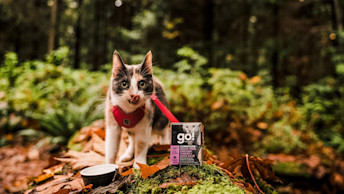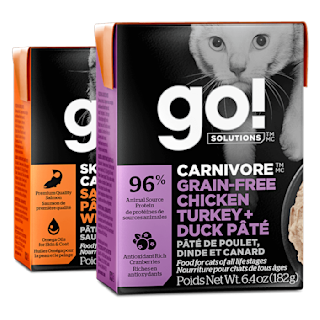February 2, 2021
Top Tips for Keeping Your Cat Hydrated

During the fall and winter months it probably seems like keeping your cat hydrated is a non-issue, and very few of us would give it a second thought. The truth is that ensuring your cat stays hydrated is a year-round endeavour. Genetically felines have a low thirst drive due to their roots in dessert environments. They are also notoriously finicky, and this includes their water preferences. Since water is essential to their well being, keeping them hydrated is almost a full-time job.
Importance of Proper Hydration
We’ve all heard about the 8 glasses a day rule that humans should follow in order to stay happy and healthy. The amount your cat needs will depend on the weather, your cat’s weight, and their activity level, but the general rule of thumb is approximately 60ml of water daily for every kilogram of weight.
Water intake prevents urinary diseases, keeps organs functioning properly, and helps the kidneys flush out toxins. Kidney health is vital for felines, kidney disease being one of the most common health issues in senior cats. Approximately 1 in 3 cats will develop kidney disease, and it is one of the leading causes of death.
Making Water Appealing
Temperature – cats prefer their water tap cold. Typically refrigerated water is too cold for the average cat. On a very hot day you can refrigerate the water to keep it cold longer.
Cleanliness – cats like very clean water. It’s a good idea to change your water at least once a day, and more often during hot weather. Keep the water dishes clean but make sure they are properly rinsed of any soapy residue. Cats are extremely sensitive to fragrances and chemicals. Try to use an unscented, natural dish soap.
Dishes – the best dishes for water, as well as food, are stainless steel. Stainless steel is sanitary, durable, and easy to clean. Some cats like to drink right out of a glass, and if you happen to have one of these fancy felines, find glasses that are bottom heavy in order to keep them from tipping over.
Source – most cats are perfectly content drinking out of a regular dish, but there are many felines that like their water to be moving. These are the cats that end up sitting on the sink, or the rim of your bathtub, drinking the water as it comes out of the tap. While this may work at times, leaving a sink running all day is not a good idea. If your cat prefers his or her water to be mobile, then investing in a drinking fountain is the way to go. The water stays cool, fresh, and most importantly it moves.
Placement – ideally you should have a few water dishes spread out throughout your house. One feeding area is sufficient (depending on the size of your house of course), but there should be several water dishes in various places to encourage your cat to drink regularly. Try not to put a water dish right next to a food dish. Cats tend to cross contaminate their water with their kibble so leave some space between the two.
Cat Food and Water Content
Dry cat food typically contains about 10% moisture, while wet food in Tetra Pak® Cartons contains about 70% to 80%. This is why Tetra Pak® recipes (or wet food) is so important for your cat. While it does not replace water consumption it does play a crucial role in providing much needed moisture. In fact as cats get older and become dehydrated more easily it is a good idea to add warm water to the wet food. Quality dry kibble is a must for the overall health of your cat, but to be on the safe side it is always a good idea to supplement dry food with wet. You can free feed the kibble and keep the wet food as a daily treat at night or in the morning.

Recommended Solution
Pocket-Sized Paks of Solutions-Based Nutrition
Formulated to provide solutions for cats’ unique dietary needs including picky eating, dandruff or dull coat, and food allergies or sensitivities.
View wet food recipes
Is My Cat Dehydrated?
Some signs of dehydration are scaly skin, a dull and dry coat which can appear oily, pale gums, and lethargy. If you are concerned and want to check your cat to see if they are dehydrated, you can check by “scruffing” the cat. Gently pinch the skin between the shoulder blades and lift it. If the skin returns to its’ normal shape immediately then your cat is fine. If the skin remains standing, or goes down very slowly, then your cat needs more water intake.
